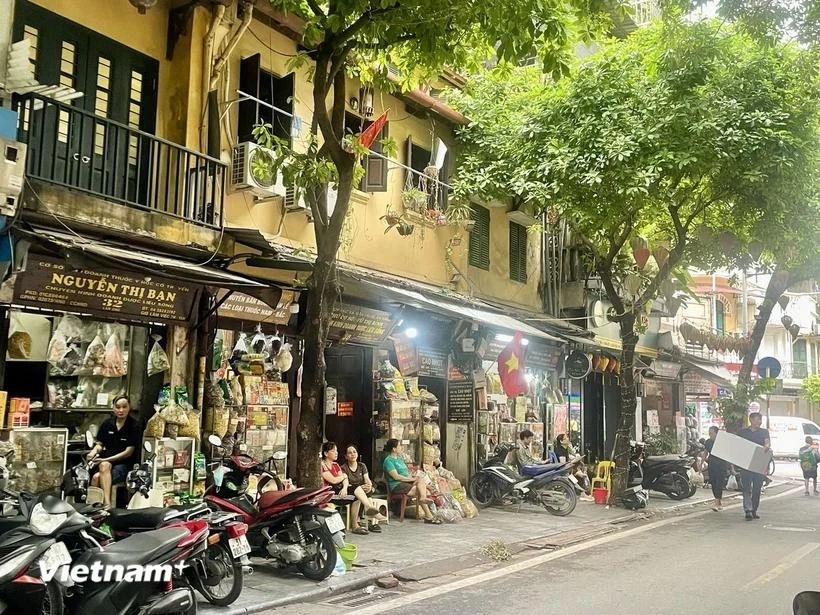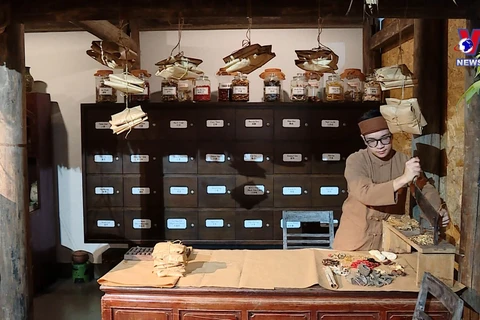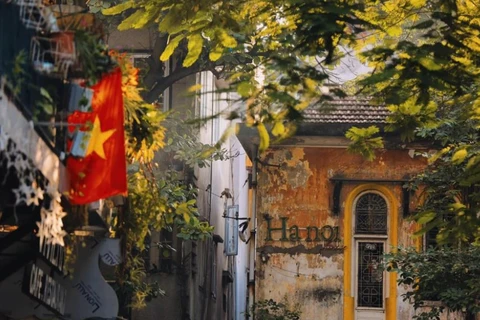
Hanoi (VNA) - As time passes by, shops selling oriental medicine on Lan Ong street in Hanoi are busy, unlike other traditional trades on many other streets in the city’s Old Quarter which have died out over the years.
Ancient Thang Long city, having gone through the historical ups and downs, still maintains the hustle and bustle on streets that are named after the trades they serve.
Preserving and developing traditional trades in the Old Quarter of Hanoi, including oriental medicine on Lan Ong Street, is now a focus of attention for the Hoan Kiem district authorities.
Trade passed down from generations
Lan Ong street stretches 180m, running from Hang Duong – Hang Ngang crossroads to Thuoc Bac street, cutting through the Cha Ca – Hang Can crossroads. It used to be Hau Dong village, Hau Tuc canton, Tho Xuong district, and is now in Hang Bo ward, Hoan Kiem district, in Hanoi.
It is named Lan Ong, the popular name of a man often referred to as Hai Thuong Lan Ong (1720-1791), whose real name is Le Huu Trac from Lieu Xa, Duong Hao district (now My Hao district), in Hung Yen province. The man was famous for his great contributions to the national medicine who successfully inherited the principle of “Vietnamese medicine to cure Vietnamese” by Zen Master Tue Tinh.
Hanoi Old Quarter is a unique structural complex bearing the hallmark of a residential area in which traditional handicraft trades were practiced. Among them, the trade of herbal medicine strongly developed on Lan Ong street.

Lan Ong street is mostly oriental medicine shops, with century-old wooden and copper signboards still hung in front of many shops. The oriental medicine shops on this street make up about 90% of the total in the whole district, affirming the traditionality of the trade on Lan Ong street.
The first to do the job on the street were those of the Chinese origin, from Fujian province, and they were followed by dozens of Vietnamese from Hanoi.
As time goes by, shops selling oriental medicine on Lan Ong Street in Hanoi remain busy, unlike other traditional trades on many other streets in the city’s Old Quarter.
On Lan Ong street, shops selling oriental medicine are lined up next to each another, offering a wide range of products wrapped in paper or in plastic bags and hung from their windows. Visitors can smell the natural medicines from afar and see the instruments used to process the medicine inside the shops.

Dotting the street and located next to the shops are the quiet consultation chambers decorated with the portrait of Hai Thuong Lan Ong and equipped with ancient boards containing medicine in hundreds of drawers, each with the name of the medicine written on it.
The trade on this street has been passed down from one generation to the next for centuries, with each clan having its own trade secret.
Preserving cultural legacy of oriental medicine
In 2014, the People’s Committee of Hoan Kiem district and households on the street gave a facelift to the shops.

To preserve and develop the trade on the street, the general idea is to combine the offer of traditional medicine with the development of tourism.
Experts believe that the combination can bring about many positive benefits in line with the current tourism trend, but the work requires improvement in the quality of the products and expertise of practitioners, along with the practical support and assistance from authorities./.






















